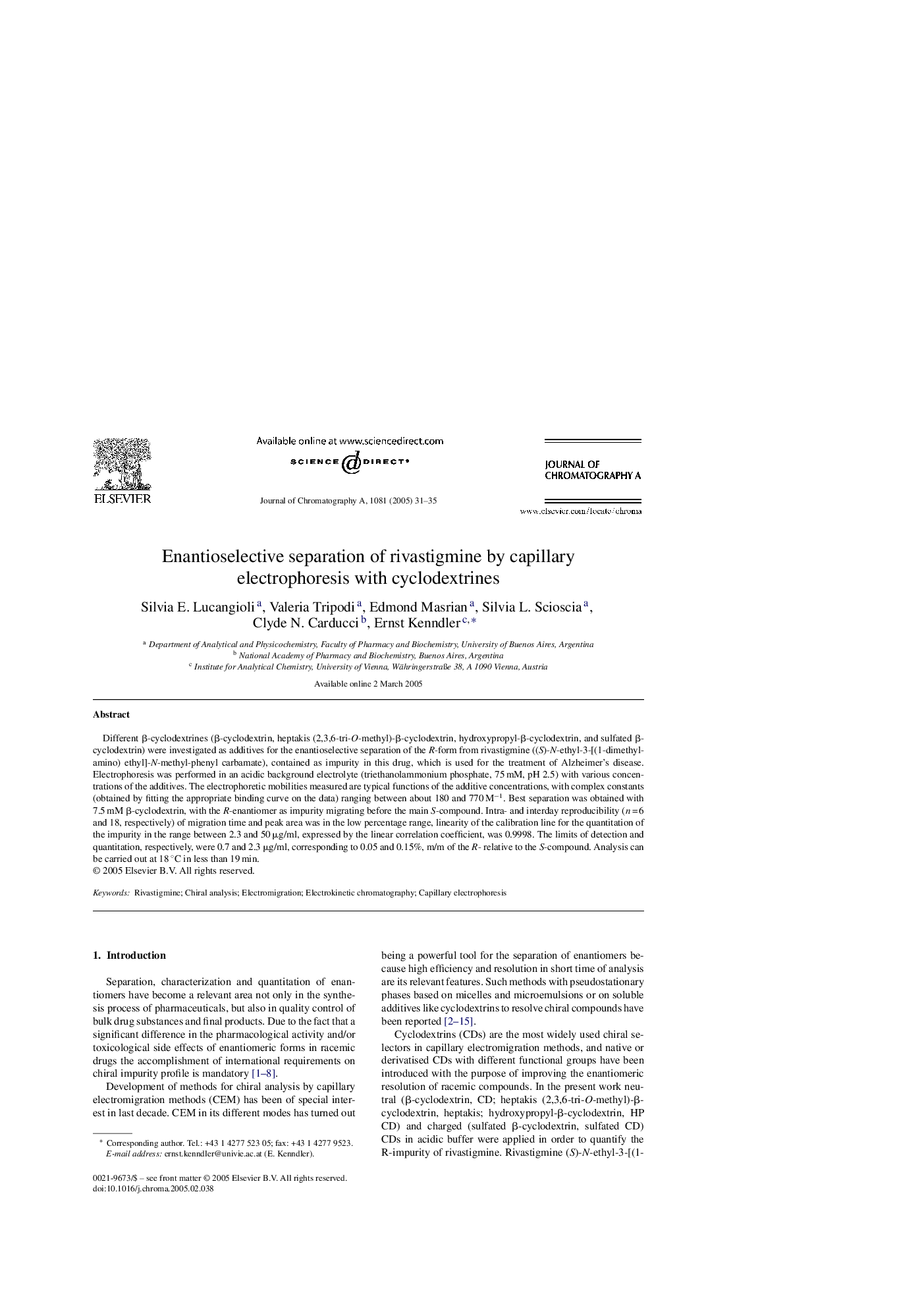| Article ID | Journal | Published Year | Pages | File Type |
|---|---|---|---|---|
| 10548006 | Journal of Chromatography A | 2005 | 5 Pages |
Abstract
Different β-cyclodextrines (β-cyclodextrin, heptakis (2,3,6-tri-O-methyl)-β-cyclodextrin, hydroxypropyl-β-cyclodextrin, and sulfated β-cyclodextrin) were investigated as additives for the enantioselective separation of the R-form from rivastigmine ((S)-N-ethyl-3-[(1-dimethyl-amino) ethyl]-N-methyl-phenyl carbamate), contained as impurity in this drug, which is used for the treatment of Alzheimer's disease. Electrophoresis was performed in an acidic background electrolyte (triethanolammonium phosphate, 75 mM, pH 2.5) with various concentrations of the additives. The electrophoretic mobilities measured are typical functions of the additive concentrations, with complex constants (obtained by fitting the appropriate binding curve on the data) ranging between about 180 and 770 Mâ1. Best separation was obtained with 7.5 mM β-cyclodextrin, with the R-enantiomer as impurity migrating before the main S-compound. Intra- and interday reproducibility (n = 6 and 18, respectively) of migration time and peak area was in the low percentage range, linearity of the calibration line for the quantitation of the impurity in the range between 2.3 and 50 μg/ml, expressed by the linear correlation coefficient, was 0.9998. The limits of detection and quantitation, respectively, were 0.7 and 2.3 μg/ml, corresponding to 0.05 and 0.15%, m/m of the R- relative to the S-compound. Analysis can be carried out at 18 °C in less than 19 min.
Keywords
Related Topics
Physical Sciences and Engineering
Chemistry
Analytical Chemistry
Authors
Silvia E. Lucangioli, Valeria Tripodi, Edmond Masrian, Silvia L. Scioscia, Clyde N. Carducci, Ernst Kenndler,
